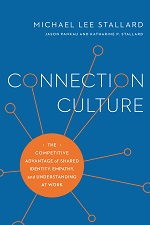ATD Blog
What Talent Development Leaders Can Learn from America’s #1 Cancer Center
Fri Aug 21 2015


Approaching the entrance of Memorial Sloan Kettering Cancer Center, a big doorman named Nick Medley locked his eyes on my wife, Katie, and warmly greeted her like she was a returning friend. I was surprised. This was in Midtown Manhattan, where people rarely make eye contact with passersby.
In the main lobby, the receptionist was calling everyone “honey.” Even the security and administrative people were friendly and helpful. Katie’s oncologist, Dr. Martee Hensley, spent an hour educating us about treatment options and answering our long list of questions. She was upbeat and optimistic.
By the end of our consultation at Sloan Kettering, I had two distinct reactions. First, I had done my research and knew it had one of the top teams in the world to treat advanced ovarian cancer. And I had a second reaction that I had not anticipated: I knew they cared. I could feel it.
Going into Sloan Kettering that day my heart was heavy, knowing that Katie’s chance of survival was less than 10 percent. The diagnosis of advanced ovarian cancer had come only a year after she successfully faced breast cancer. I was afraid of losing my beloved wife and best friend, and fearful that our daughters, ages 12 and 10 at the time, would lose such a wonderful, loving mother and that Katie would miss out on seeing them grow up.
Leaving Sloan Kettering, however, I felt optimistic that our medical team could help our family get through the difficult season ahead. And they did.
On one occasion when Katie was undergoing chemotherapy, I happened upon a lounge area where some Sloan Kettering employees were discussing the results of an employee survey. I heard people say how much they loved their patients, how much they loved their colleagues, and how much they loved their mission “to provide the best cancer care anywhere.” I knew then that Katie was being cared for by an organization with a remarkable culture.
A Spirit of Connection
Every organization has a spirit that emanates from its culture. Some organizations have a spirit of indifference to people. These organizations are uninspiring and, over time, average performers at best. Other organizations have a spirit of control, where those with power, control and status rule over the rest. These organizations also underperform.
The best organizations have a spirit of connection, marked by leaders who communicate an inspiring vision, value people, and give them a voice. When people feel connected, research has shown they perform at the top of their game. They also give their best efforts. They align their behavior with organizational results. They communicate better and cooperate more. They are also more creative and innovative. These benefits add up to a powerful source of competitive advantage.
Sloan Kettering has this spirit of connection, and it’s key to achieving sustainable superior results and favorable patient outcomes. Last year, U.S. News and World Report ranked Sloan Kettering the #1 rated cancer center in the United States, and it has been ranked the #1 or #2 cancer center for the last 25 years.
Staying Connected
Eleven years have passed since that first appointment at Sloan Kettering. Each time Katie returns for a check-up the connection we initially felt picks right back up, starting with a hug from Nick, now in a concierge role, and a sincere, “I’m proud of you!” and “God bless you.” So when Katie was diagnosed with a new primary breast cancer last year, there was no question where we would go. But would this experience, with a different team of doctors and at a different location in Manhattan, be as favorable?
We can attest that Sloan Kettering’s connection culture is alive and well. It makes such a difference to know we are in the hands of experts who also care about us as people. Early on the day of Katie’s surgery, for instance, Dr. Alexandra Heerdt, dressed in surgical scrubs, greeted us in the reception area to answer any last-minute questions, and give Katie a hug. Oncologist Dr. Tiffany Traina was terrific about guiding us through Katie’s chemotherapy treatments. Both doctors, and their teams, are calm, confident, and empathetic—and that is contagious. Today, Katie is cancer free and thriving.
How is the spirit of your organization? When your clients walk through your front door, what spirit will they sense? Do you have a culture of connection that will draw them in, create long-term loyalty and have them enthusiastically recommending you to others? Organizations that achieve sustainable superior performance don’t leave these matters to chance.
Editor's Note: Adapted from Connection Culture: The Competitive Advantage of Shared Identity, Empathy and Understanding at Work. (Read sample chapters here.)
You've Reached ATD Member-only Content
Become an ATD member to continue
Already a member?Sign In
